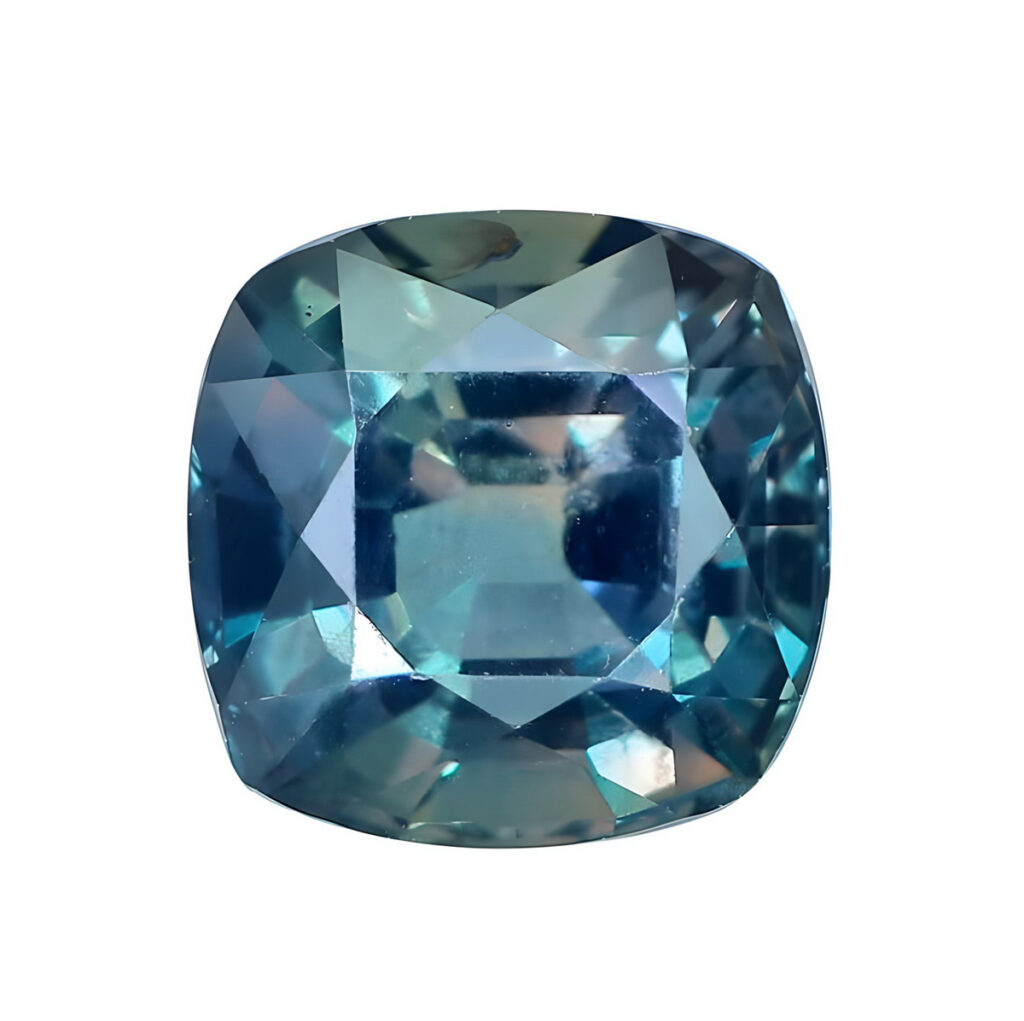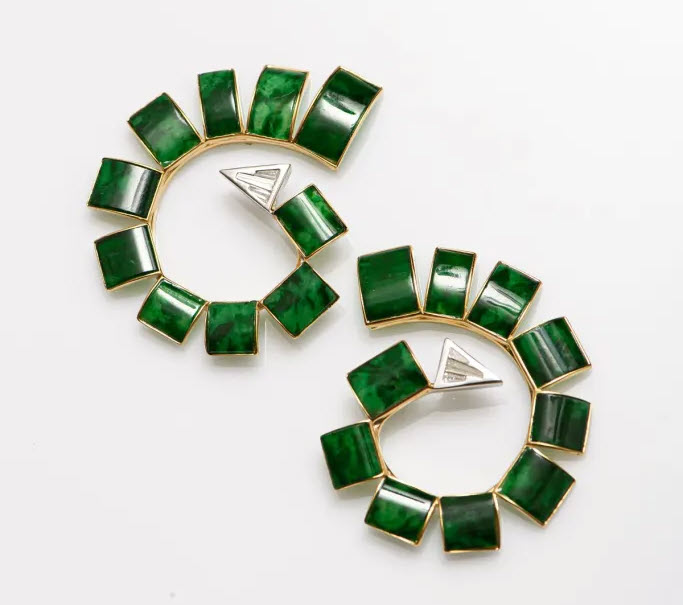
With demand for these seductive scarlet stones on the rise, jewelers are struggling to find sources that don’t raise ethical quandaries.
The celebrated rubies from deep in the ancient mines of Burma’s (Myanmar’s) Mogok valley have a mystical appeal to them. They have historically fetched the highest prices on the global market, and their famously intense deep-red shade, known as “pigeon’s blood,” evokes passion, power and prestige. Their beauty lies in their uniform color, high clarity and rich saturation, which make them incredibly rare and valuable. However, ethical issues clouding their country of origin in recent years have pushed dealers to look elsewhere to satisfy buyers’ appetite for rubies.

Hot commodity
While the pandemic has brought significant changes to the gemstone sector, traders have noticed a release of pent-up demand in recent months for medium- to fine-quality rubies in all sizes and origins due to shortages on the market. With Covid-19 restrictions starting to ease, Rohit Naheta — managing director of gemstone dealer Ders International — has seen a backlog of client requests. “It’s been a great few months,” he says, since his company has been selling off its existing inventory. “Now it’s harder to replace the goods, as large manufacturers are charging much higher prices than before.” Prices for rough rubies are also high, he adds, noting that many manufacturers have closed their operations, and the cost of labor has gone up. The scarcity of better-quality goods in particular is driving up prices for fine-quality stones, observes Jeremy Hakimi, director of New York-based gem supplier Colorline. “Rounds, square cushions and heart shapes in 1- to 2-carat sizes are our best sellers,” he says. “In larger sizes, ovals, cushions and heart shapes are in strong demand. Emerald cuts sell very well, but they are limited in supply due to the weight loss required to make the straight edges.”

Emily P. Wheeler ear cuff in 18-karat rose gold with rubies and pink sapphires. Photo: Emily P. Wheeler.
The majority of parcels available are ovals and rounds due to the nature of the rough stones, says Catherine Brooks, managing director of Thailand-based supplier Peter and Brooks. “Baguettes and square cuts remain very sought-after, especially in high-end goods, as demand outweighs supply. Many jewelry and watch pieces are designed with these shapes in mind.” In the past six months, Nicolas Valentin — commercial manager of Paris-based gemstone manufacturer Maison Piat — has seen an increase in demand for calibrated rubies. Particularly popular are rounds measuring 1.5 to 3.5 millimeters (about 0.15 carats) and ovals of 5 or 6 millimeters by 4 millimeters (about 0.65 carats) that have top red color and are eye- to loupe-clean. Phuket Khunaprapakorn concurs that calibrated stones are in demand. The managing director of manufacturer Gemburi has observed consistent orders for such stones below 1 carat, as well as in the 1- to 2-carat range.
Beyond Burmese
The political conflict and trade embargos surrounding Myanmar’s recent military coup have made Burmese rubies highly controversial. Since the February 2021 takeover, Western countries have imposed economic sanctions, leading to a shortage of Burmese rubies in the market. The pandemic has also contributed to supply shortages; since the outbreak began in 2020, Khunaprapakorn has noted a 20% decline in new ruby rough coming from Myanmar. Faced with a dwindling supply of Burmese stones, the industry is turning its attention to gem-quality rubies from Mozambique and other regions. Prices for Mozambique goods are notably lower than for Burmese. “Although the hues are a bit different between them, some of the finer Mozambique rubies come quite close to the color and quality of the finer Burmese rubies,” says Hakimi. With production down and fewer stones in circulation, many of the Burmese rubies on the market today are older ones that come through the secondhand market. These are often set in jewelry and available at a discounted rate, Hakimi reports. Sometimes, says Naheta, if an older stone has value, “we tend to repolish the chips and remarket it.” However, “a lot of the time, we don’t recut the stones, as clients prefer the style of older cuts.”

Sustainable alternatives
Sustainability, traceability and transparency continue to be priorities in a post-pandemic world. Many large jewelry companies have stopped buying and selling Burmese material due to the political insurgencies. But despite the resulting rise in demand and prices for Mozambique goods, ethical challenges remain. Miner Gemfields’ Montepuez deposit in Mozambique has been the subject of severe human rights allegations in recent years, complicating jewelers’ sourcing efforts. Other notable ruby producers include Afghanistan, Tanzania, Cambodia, Vietnam, Madagascar, Tajikistan and India, but their current output is sporadic and too limited to meet market needs. “There is a systematized way of buying Mozambique rough rubies, [and it] is controlled by mining companies,” states Naheta. “The supply of ruby has become more controlled, making it difficult for regular dealers to get hold of rough.” That doesn’t mean they aren’t trying, though. “We are committed to finding alternative solutions for our clients,” says Brooks. “Transparency is the only way forward.” Larger luxury groups are leading by example, and Brooks — whose company is a member of the Responsible Jewellery Council (RJC) — sees this having a positive effect on the upstream supply chain. “Working with trusted partners for raw-material sourcing and having our in-house manufacturing gives us the transparency to operate within and supply the jewelry and watch industries in the long term. The more your organization is vertically integrated, the better you can guarantee responsible practices and sourcing.”

Independent jewelry designers are making the effort to conduct due diligence, sourcing rubies from respected and trustworthy suppliers. One example is New York designer Angie Marei, who creates bold and striking collections featuring marquise- and pear-cut rubies in clustered arrangements. “While I do not mine the stones myself, I take the time to get to know the suppliers I work with and learn about their processes,” she relates. “My suppliers have close personal relationships with the miners and have worked together with mining villages and families for many generations. Artisanal mines are traditionally less harmful to the environment and provide income for the locals. It’s important to me that we support small artisanal mining communities.”

Group projects
In that vein, out of traceability and ethical concerns, Maison Piat has partnered with Moyo Gems — an organization that works with female artisanal miners in Tanzania to bring their goods from mine to market. Piat’s Valentin appreciates that Moyo is “audited by an external NGO such as Pact. It’s the future of our business and a main concern [for] our clients in Europe and the US. Asia has started to show interest in these concerns, too.” His company has “also planned to find new partnerships in Sri Lanka and Madagascar to help improve traceability and ethics [for] our main sources of gemstones.” Another nonprofit group working to bring equity to the supply chain is Virtu Gem, which aims to support mining communities in Zambia, Kenya and Malawi. During the pandemic, it connected jewelers with artisanal and small-scale miners (ASM). “Currently, Virtu Gem is offering ruby cabochon mined and cut in Zambia,” says country coordinator Chiko Manda. “The color is fantastic, with mostly deep pinks and some bright reds. We offer designer cuts like long, thin briolette pairs for earrings and big, skinny, high-dome ovals for cocktail rings.” Sales of these rubies will help the miners achieve official status as a mining operation.

Virtu Gem also has a reliable source of cabochon material in Kenya. Malawi isn’t as far along yet in the ruby department, though for other gems, the group has ongoing projects in all three countries. “We are not buying ruby in Malawi, as there are no known legal mines in production,” Manda explains. “Malawi has two ruby mining places, namely Namizimu forest reserve in Mangochi district and in Ntcheu district. Both of the mines are in the border area with Mozambique. The Chimwazulu mine is the one which produces gem-quality ruby, while the [material] produced in Namizimu forest reserve is cabochon-quality.” Only Chimwazulu is legally registered, however, and it’s not currently in operation. “We don’t know when they will resume production. That was the ruby mine that was previously exporting to the US, and the only mine that was producing a substantial amount of ruby in Malawi.”

The synthetic option
Some jewelers are turning toward synthetic stones as an alternative. One of them is Massachusetts-based designer Chris Ploof, who takes advantage of the lab-grown material’s lower cost to experiment with spherical and other unusual shapes that would be expensive to attempt with natural ruby. “You don’t see many spherical gemstones, and the color and refraction is incredible from a sphere,” he says. “Although I love natural stones, synthetic stones are really beautiful and a cost-effective option. This industry is all about trust and verification. I tend to work directly with the top people in a company to establish a relationship, and keep an open line of communication and continue to audit their practices.” However, the majority of jewelers prefer to work with natural rubies. “I don’t use synthetic rubies, as I feel no connection to them,” says Marei. “While synthetics can come in beautiful colors, they do not have the life, personality, or unique characteristics of natural stones from Earth.” Flora Wong agrees. The director of Hong Kong-based jeweler Forms selects rubies based on “the characteristics of their natural inclusions, how they reflect light and emit different hues. These are great creations from mother nature, and we inspect each of them in different lighting and angles to bring out their best characteristics in a design.”

Lapidary locales
There are several main centers for ruby cutting, often located in gem-trading hubs. The world’s most important ruby-cutting center is Thailand, particularly Chanthaburi and Bangkok. “Thailand continues to be a strong trading and manufacturing hub for both rubies and all colored gemstones due to [its artisans’] technical know-how in heat treatment and precision cutting skills,” says Rohit Naheta of Ders International. Sri Lanka is a major supplier of fine-quality sapphires, and it has developed expertise in ruby cutting as well. Some of the rough from Mozambique gets cut there, according to Jeremy Hakimi of Colorline.
Other notable ruby-manufacturing hubs include India and China. Africa is still a relatively small operation in this field, and the quantities are hard to define. The Virtu Gem project is offering ruby cabochons mined and cut in Zambia, though “very few rubies are cut in the country, and [many] of the ones cut come from Mozambique,” clarifies group cofounder Susan Wheeler. Even so, she says, “I really like what I have received from Zambian cutters. The quality is on par with Greenland ruby.” With less rough coming in during the pandemic, though, manufacturers have noted a shortage of skilled workers. “Fewer cutters want to cut smaller stones,” Naheta says. The younger generation in general is less interested in learning the art of cutting, says Catherine Brooks of Peter and Brooks. She calls on the industry as a whole to create more incentives.

Main image: Forms Wings bracelet in 18-karat white gold with Burmese rubies and diamonds, on model. Photo: Forms Jewellery.











